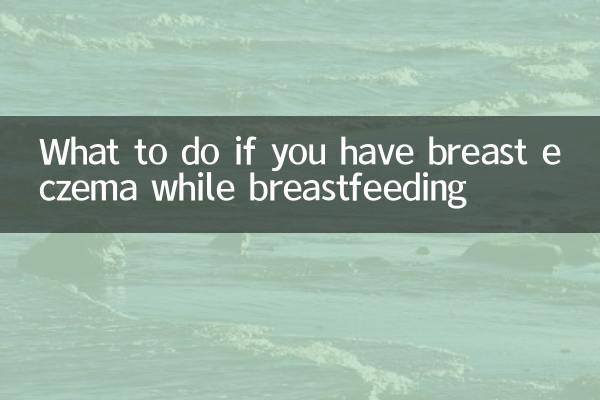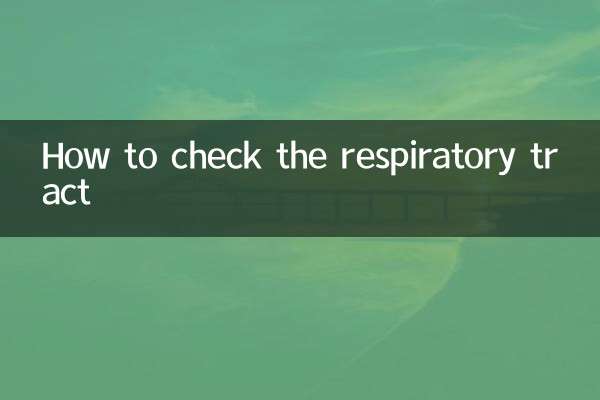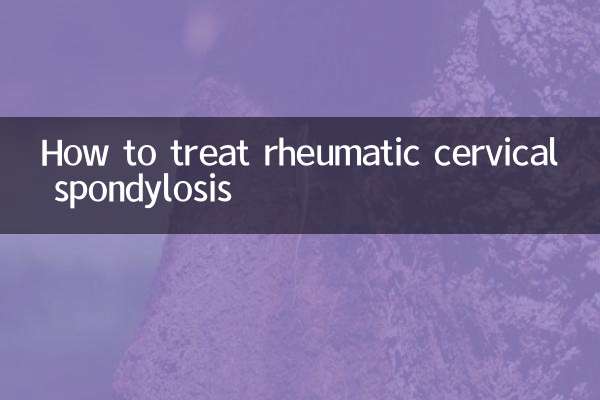What to do if you have breast eczema during breastfeeding
Breast eczema during lactation is a problem that many mothers may encounter. It not only causes discomfort but may also affect breastfeeding. This article will give you detailed answers to the causes, symptoms, treatments and preventive measures of breast eczema to help you better deal with this problem.
1. Causes of Breast Eczema

Breast eczema is usually caused by impaired skin barrier function, allergic reactions, or external stimuli. Here are common triggers:
| inducement | illustrate |
|---|---|
| dry skin | During breastfeeding, the skin loses moisture quickly and is prone to dryness and cracking. |
| allergic reaction | Allergies to clothing, skin care products or food. |
| friction irritation | The underwear is too tight or the material is not breathable. |
| milk residue | Milk that is not cleaned in time can breed bacteria. |
2. Symptoms of breast eczema
Symptoms of breast eczema vary from person to person, but common symptoms include:
| symptom | describe |
|---|---|
| Red and swollen skin | The breast skin is red and swollen. |
| itching | Itching persists in the affected area and worsens after scratching. |
| Desquamation | Dry, flaky skin. |
| exudate | In severe cases, oozing or scabbing may occur. |
3. Treatment methods for breast eczema
If you develop breast eczema, you can take the following steps to relieve symptoms:
| Treatment | Specific operations |
|---|---|
| keep clean | Wash the affected area with warm water and avoid using harsh soaps. |
| Moisturizing care | Apply a non-irritating moisturizer such as Vaseline. |
| avoid scratching | Scratching can aggravate inflammation, and cold compresses can be used to relieve itching. |
| drug treatment | Use low-dose hormonal ointments under the guidance of your doctor. |
4. Preventive measures for breast eczema
Prevention is better than cure, here are some effective ways to prevent breast eczema:
| Precautions | illustrate |
|---|---|
| Choose breathable underwear | Wear cotton, loose-fitting underwear to reduce friction. |
| Clean breast milk promptly | After breastfeeding, wipe up the milk promptly and keep it dry. |
| avoid allergens | Stay away from foods or skin care products that may cause allergies. |
| Keep skin moist | Apply moisturizer regularly to prevent dry skin. |
5. When do you need medical treatment?
If the following situations occur, it is recommended to seek medical treatment promptly:
| Condition | illustrate |
|---|---|
| worsening of symptoms | Redness, swelling, and itching continue to worsen, affecting daily life. |
| signs of infection | Symptoms of infection such as pus and fever appear in the affected area. |
| Difficulty breastfeeding | Eczema can cause pain during breastfeeding or reduced milk production. |
6. Dietary recommendations for breast eczema during lactation
Diet also has an important impact on skin health. Breastfeeding mothers can pay attention to the following dietary recommendations:
| dietary advice | illustrate |
|---|---|
| drink more water | Keeps the body hydrated and promotes skin repair. |
| Vitamin supplements | Eat more foods rich in vitamins A, C, and E. |
| Avoid spicy food | Spicy foods may worsen eczema symptoms. |
| Reduce allergenic foods | Such as seafood, nuts, etc., which can be adjusted according to personal circumstances. |
7. Summary
Breast eczema is not uncommon during breastfeeding, but with the right care and prevention, symptoms can be effectively relieved and recurrences avoided. If the symptoms are severe or persist, it is recommended to seek medical treatment in time to ensure the health of mother and baby.

check the details

check the details